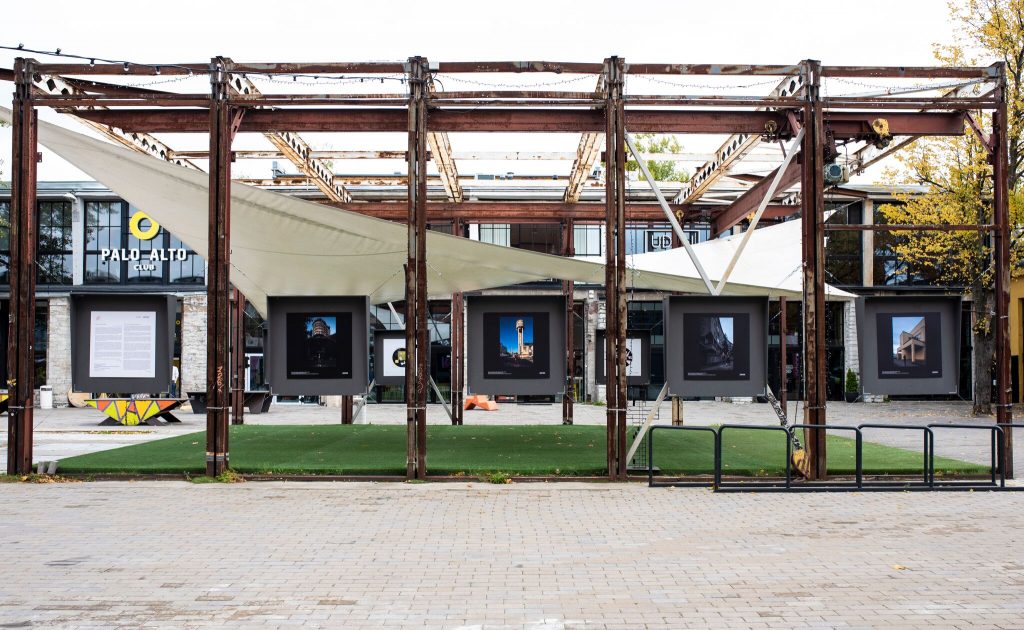Exhibition “Children of the Avant-garde” Opening and open lecture

12.09 at 18:00 exhibition opening, followed by a lecture at 19:00 by Vladimir Frolov from Project Baltia about the destiny of avant-garde on the example of St Petersburg architecture. Lecture is held in bar Pudel.
An exhibition by Project Baltia discusses the topic of avant-garde and its legacy in its relation to the culture of today’s generation.
The version of ‘Children of the Avant-garde’ for TAB 2019 does not repeat the original exhibition shown in St Petersburg in 2016. Time goes by and the curatorial idea of the Grand and Solid Art of ‘parents’, which is not fully understood by the ‘children’, whose works in the best case imitate the heroic gestures of the leaving epoch, has to be transformed following new conditions.
Only one artist acts as a bridge with the first show, it is Andrey Lublinsky. But even he presents a different project. Three years ago Lublinsky exhibited Malevich-style figures of abstract men (something in between Lego and logo). Now he shows urban landscapes as seen by these new humans with eyes assisted by a digital tool. It is a playful and perhaps childish vision of a city but its’ aesthetics of a computer game equalize historic and modernistic, merge familiar and unfamiliar, give birth to a totally new appreciation of reality: the one of a new man, a simple and innocent child of Avant-garde, who is ready to press the button and turn a familiar postcard view to an abstract scheme.
The other participants of the exhibition are architects of different generations. Pavel Kovalev is the most mature in the group. His work was influenced by the Constructivism of 1920s and postmodernist works of Leonhard Lapin and other representatives of Tallinn school of 1970-80s, which he has followed, while working in Estonia in the late Soviet times. Kovalev develops for TAB a study of suprematist graphics applied to the practical needs of contemporary Russian free market. His interior design for Pelmennaya chain restaurants, which one can read as hipsterized avant-gardism, is now thrown back to abstractionist exercises, where the everyday and banal function does not dictate the design anymore.
Andrey Voronov of Archattacka Architects, which is one of the most radical young collectives in St Petersburg, reflects on the avangardist function and form in today’s reality. He comes to a series of ‘portrayed objects’ that refer not only to 1920s but also to revolutionary works of Ledoux and Boullee. Suddenly, the light architectons get a sort of materiality and rude monumental heaviness, that puts them into a different (our?) world. The series can be seen as an epitaph to the cosmic ambition of early functionalism and futurism, written by descendants, who perhaps got mature (which was not always the case with the ancestors).
Finally, Stepan Liphart (who previously led a Moscow based group ‘Children of Iofan’ and now runs his own office Liphart Architects in St Petersburg) gives us a beautiful image of neo- Art Deco urban fantasy, which is seductive and ambiguous. Liphart reminds us that the avant-gardist experience ended up with the rise of totalitarianism. The great masters of 1920s appeared to be unable to implement their utopian view of the world to reality and required a help from politicians. So the latter took the power and the creators had to allow a drama of compromise occur. The new super-eclectic variant of Art-Deco by Liphart is also synthetic; it uses musical (particularly inspired by Skryabin) and cinema references to reinforce its impact on the viewer. The only thing is that we know exactly where this path led before; therefore, we pretend that this belongs ultimately to the virtual reality. However, what if one day this virtual world becomes the one that dictates, the one that give us the law?